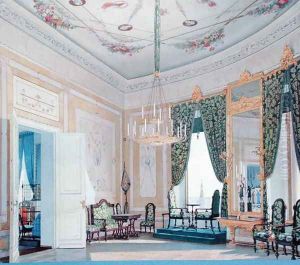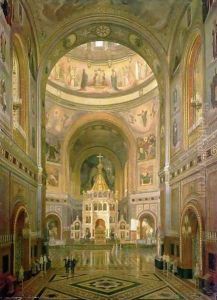Fedor Andreevich Klages Paintings
Fedor Andreevich Klages was a Russian artist known for his contributions to painting during the late 19th and early 20th centuries. Born in 1871 in the Russian Empire, Klages lived through a tumultuous period of Russian history, which saw the end of the Tsarist regime and the rise of the Soviet Union.
Klages received his art education at the Imperial Academy of Arts in Saint Petersburg, where he studied under influential artists of the time. His style was largely shaped by the academic traditions of the time, although he was also exposed to the burgeoning movements that were beginning to challenge the classical approach to art.
Throughout his career, Klages worked across various genres, including portraiture, landscape, and historical painting. His works were characterized by a strong realism and attention to detail, which was a hallmark of the academic style. Klages was adept at capturing the essence of his subjects, whether it was the grandeur of Russia's landscapes or the subtleties of human expression.
Despite his talents, Klages did not achieve the same level of fame as some of his contemporaries. The political upheavals of the early 20th century, including World War I and the Russian Revolution, had a significant impact on the art world in Russia. Many artists found themselves at odds with the new Soviet ideology, which favored Socialist Realism over the more traditional styles.
Klages continued to paint throughout these challenging times, but the demand for his classically influenced work waned as the Soviet regime promoted art that aligned with its political agenda. Nevertheless, Klages left behind a body of work that is appreciated for its craftsmanship and historical value.
Fedor Andreevich Klages passed away in 1930, leaving behind a legacy that would be appreciated by art historians and collectors who valued the traditional academic style of painting that Klages had mastered. His works remain as a testament to the skill and dedication of an artist working during one of the most volatile periods in Russian history.

